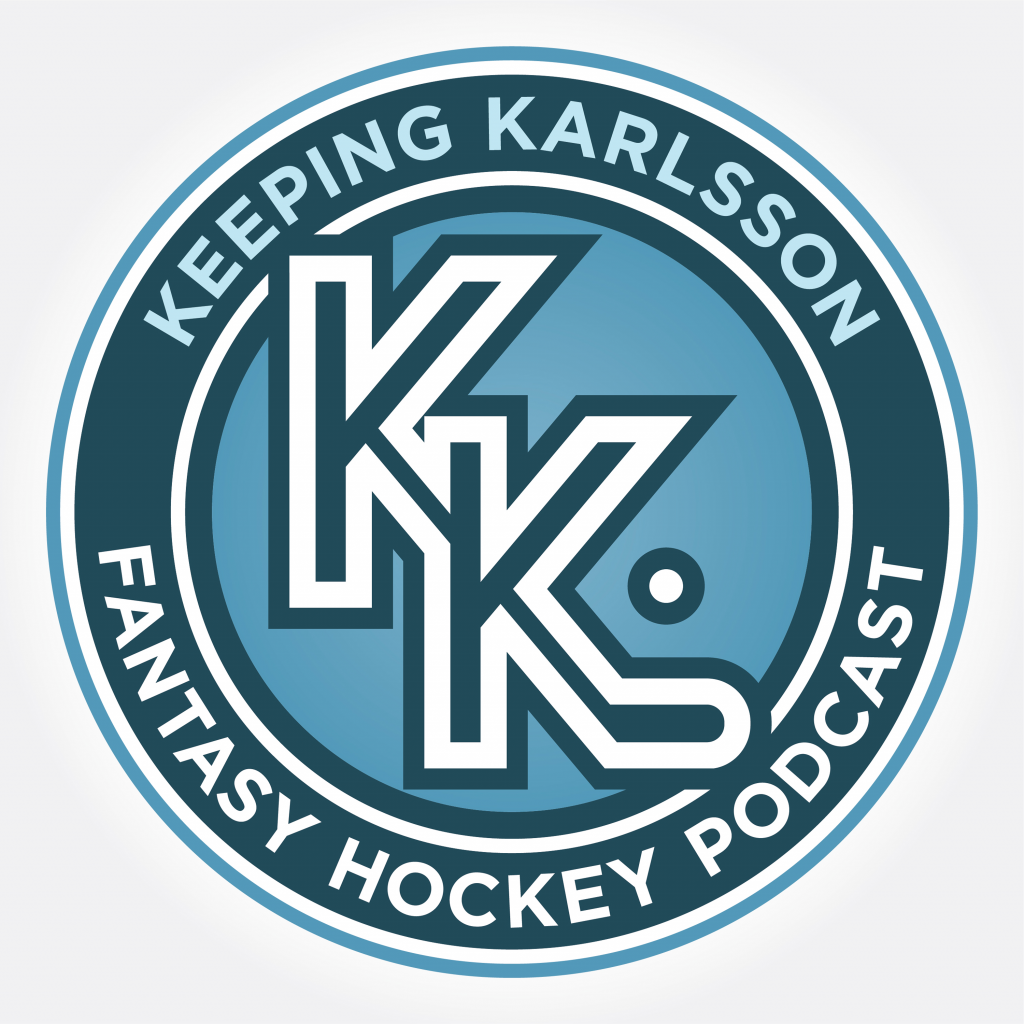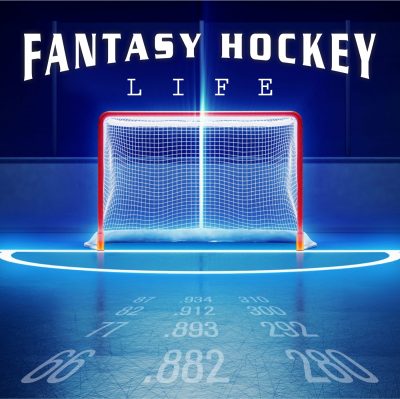
This week’s focus is on two pivots (Derek Stepan and Ryan Nugent-Hopkins) who’ve yet to truly meet lofty fantasy expectations.
Cage Match is here to determine whether either one might finally reward patient poolies this season or in the near future.
Career Path and Contract Status
Stepan was drafted 51st overall in 2008, played two years of college hockey (87 points in 81 games), then signed in summer 2010. He made the Rangers out of camp, posted 45 points as a rookie, then rose to 51 points in his sophomore campaign. From there, he exploded to 44 points in 48 games in lockout-shortened 2012-13. And although 2013-14 saw Stepan set a career best with 57 points, that was only 13 more points (in 34 additional games) versus 2012-13. Over the last two seasons, Stepan scored at a cumulative 63 point scoring pace; however, he also missed 24 total games (versus none previously in his entire career).
Nugent-Hopkins (“RNH”) was the first overall selection in 2011, and hit the ground running with 52 points in only 62 contests as a rookie in 2011-12. But unlike Stepan, RNH had a drop in production as a second year player, to only 24 points in 40 contests. The next two seasons saw RNH do a better job avoiding the injury bug (missing only eight total contests) while posting consecutive 56 point outputs. But last season RNH slumped to 34 points in 55 games, although that seemingly can’t be blamed on the arrival of Connor McDavid, since he actually did worse without McDavid in the line-up (19 points in 33 games) than when they both dressed (15 in 22).
Each player’s contract runs through 2020-21, with Stepan having the slightly higher cap hit and AAV ($6.5M vs. $6M). Next season a NMC kicks in for Stepan until 2019-20, when it morphs into a NTC, while RNH’s deal has no team restrictions.
Ice Time
|
Season |
Total Ice Time per game (rank among team’s forwards) |
PP Ice Time per game (rank among team’s forwards) |
SH Ice Time per game (rank among team’s forwards) |
|
2015-16 |
17:45 (D.S.) – 3rd 19:03 (RNH) – 2nd |
2:22 (D.S.) – 4th 2:36 (RNH) – 4th |
1:42 (D.S.) – 4th 0:57 (RNH) – 6th |
|
2014-15 |
18:10 (D.S.) – 1st 20:38 (RNH) – 1st |
2:40 (D.S.) – 4th 2:43 (RNH) – 1st |
1:35 (D.S.) – 3rd 1:38 (RNH) – 3rd |
|
2013-14 |
18:03 (D.S.) – 3rd 20:23 (RNH) – 1st |
2:42 (D.S.) – 3rd 2:59 (RNH) – 3rd |
1:10 (D.S.) – 7th 1:14 (RNH) – 7th |
|
2012-13 |
20:55 (D.S.) – 2nd 18:51 (RNH) – 3rd |
2:49 (D.S.) – 6th 3:02 (RNH)- 3rd |
2:06 (D.S.) – 2nd 0:13 (RNH) – 11th |
This data underscores how real life situations affect fantasy value. Stepan was cruising in 2012-13, with elite scoring and the tenth highest Ice Time per game among all NHL forwards. Then Alain Vigneault became coach; and it’s gone from three Ranger forwards each receiving 19:58+ per game in 2012-13 to not one averaging even 18:45 per game in any season since then.
What makes matters worse for Stepan is last season he not only saw his Total Ice Time shrink by 25 seconds per game, but most of the lost Ice Time was on the PP and he also managed to actually add SH Ice Time. But it turns out while Stepan was tallying 31 points in his last 34 games in 2015-16, he did so with over 19:00 of total Ice Time in 16 of those contests, compared to only two 19:00+ games in the 38 contests he’d played up to that turning point in his season. And when he posted 43 points in 44 games to start 2014-15, he had 19:00+ in 16 of those games too, versus just three of his remaining 24 contests.
Moreover, in three of these four seasons Stepan’s points per 60 minutes at 5×5 actually put himwithin the top 25 among hundreds of forwards who played 500+ minutes in that season. Therefore, like we saw with Nathan MacKinnon in a recent Cage Match, Stepan seemingly can produce elite numbers………if he gets top Ice Time. The only question is how big an “if” that if actually is.
For RNH, 2015-16 also seemingly wasn’t a banner year. His Ice Time was down over 90 seconds; and that was with McDavid playing only 45 games. Also, although RNH’s PP Ice Time dropped ever so slightly, that still marked the third straight year it was down. Plus, it reflected that he was often not on PP1, as although he still mostly skated with Taylor Hall during the man advantage ala 2014-15, no longer was Jordan Eberle a frequent PP linemate, being downgraded instead to Teddy Purcell or Benoit Pouliot.
If there’s a silver lining, it’s indeed RNH’s ability to produce last season in the small sample size of games where McDavid was also in the mix. Although RNH now is clearly no longer the #1 center in Edmonton, and won’t have Ice Time above 20:00 per game again while riding second fiddle (through the season’s first six games, only once did he even receive above 17:31), it’s possible he might not see much of a drop in production.
After all, as teams focus on stopping McDavid, RNH could reap the benefits of facing easier opposition. Mark Messier thrived as a second line pivot under Wayne Gretzky, as did Ron Francis often under Mario Lemieux. And even today, Evgeni Malkin produces despite Sidney Crosby’s superstar presence and Ice Time. Of course I’m not trying to liken RNH to these all-time greats; but they illustrate the point that the presence of an otherworldly #1 center can help elevate the production of second line players.
Secondary Categories
|
Season |
PIMs (per game) |
Hits (per game) |
Blocked Shots (per game) |
Shots (per game) |
PP Points (per game) |
FOW (per game) |
|
2015-16 |
0.27 (D.S.) 0.32 (RNH) |
0.52 (D.S.) 0.71 (RNH) |
0.54 (D.S.) 0.65 (RNH) |
2.66 (D.S.) 1.96 (RNH) |
0.19 (D.S.) 0.20 (RNH) |
7.15 (D.S.) 6.71 (RNH) |
|
2014-15 |
0.32 (D.S.) 0.33 (RNH) |
0.53 (D.S.) 1.21 (RNH) |
0.39 (D.S.) 0.48 (RNH) |
2.28 (D.S.) 2.48 (RNH) |
0.14 (D.S.) 0.18 (RNH) |
7.98 (D.S.) 8.15 (RNH) |
|
2013-14 |
0.22 (D.S.) 0.32 (RNH) |
0.36 (D.S.) 0.90 (RNH)
📢 advertisement:
|
0.56 (D.S.) 0.43 (RNH) |
2.42 (D.S.) 2.25 (RNH) |
0.22 (D.S.) 0.25 (RNH) |
8.33 (D.S.) 6.78 (RNH) |
|
2012-13 |
0.25 (D.S.) 0.27 (RNH) |
1.08 (D.S.) 0.67 (RNH) |
0.58 (D.S.) 0.67 (RNH) |
2.25 (D.S.) 1.95 (RNH) |
0.21 (D.S.) 0.27 (RNH) |
9.33 (D.S.) 5.65 (RNH) |
Both have posted fairly consistent year-to-year outputs. The major exception is Stepan’s Hits rate in 2012-13 being more than twice what it was in any of the past three seasons. We can chalk that up to the Tortorella effect, and thus any hope of Stepan returning that level of Hits is very remote.
It should be noted that both players are very weak in the faceoff dot. During this four year period, Stepan took the 17th most faceoffs among all NHLers yet ranked 24th in FOW, with a 45.4% FOW percentage that was the lowest of anyone within the top 30 for faceoffs taken. But it’s not lower than the 43.8% of the NHLer who ranked 31st in faceoffs taken – none other than RNH! Double ouch.
PPPts is telling, as RNH – despite not scoring over a 60 point pace since a rookie– was able to tally PPPts at a rate of 0.22 per game in these four seasons. What’s troubling is now that he’s seemingly been nudged off PP1 by McDavid, chances are his PP production will decrease, perhaps markedly. This isn’t to say Stepan is without PP warts. In his case, he’s failed to average even one PPPt per every five games in each of the past two seasons. Then again, he has an “excuse” in that he didn’t rank within the top three among Ranger forwards in PP Ice Time, so at least it’s not a case of him being unable to produce with the man advantage. In fact, in 2015-16 he stood 29th in points per 60 minutes at 5×4 among the 201 forwards who skated 100+ minutes at 5×4.
But overall, neither of these guys is going to help your fantasy teams in multi-cat leagues. That, coupled with their undesirable center only eligibility and, for applicable leagues, their Faceoff weakness, should be factored into their actual value when looking to acquire them via drafting or in a trade.
Luck-Based Metrics
I’m ushering in a new era in Cage Match today, as with the DobberHockey Fantasy Guide I’m adopting the Team Shooting % metric, which reflects the shooting percentage of a player’s team while he was on the ice at 5×5 (with the overall NHL average each season being roughly 9.00%). Not only does it make for useful juxtaposition with personal shooting percentage, but it’s seemingly more telling that PDO/SPSV.
|
Season |
Personal Shooting Percentage |
Team Shooting % (5×5) |
IPP (5×5) |
IPP (5×4) |
Offensive Zone Starting % (5×5) |
|
2015-16 |
11.5% (D.S.) 11.1% (RNH) |
10.53% (D.S.) 8.49% (RNH) |
73.9% (D.S.) 56.2% (RNH) |
66.7% (D.S.) 57.9% (RNH) |
51.1% (D.S.) 52.0% (RNH) |
|
2014-15 |
10.3% (D.S.) 12.7% (RNH) |
9.91% (D.S.) 9.47% (RNH) |
80.9% (D.S.) 71.1% (RNH) |
56.2% (D.S.) 57.1% (RNH) |
50.3% (D.S.) 62.7% (RNH) |
|
2013-14 |
8.5% (D.S.) 10.7% (RNH) |
6.97% (D.S.) 8.61% (RNH) |
76.7% (D.S.) 61.2% (RNH) |
57.1% (D.S.) 69.2% (RNH) |
51.8% (D.S.) 59.0% (RNH) |
|
2012-13 |
16.7% (D.S.) 5.1% (RNH) |
9.51% (D.S.) 7.52% (RNH) |
70.7% (D.S.) 45.8% (RNH) |
60.0% (D.S.) 52.9% (RNH) |
58.4% (D.S.) 52.0% (RNH) |
This data doesn’t present RNH as having benefitted from unsustainable good luck, as his shooting % metrics (both personal and team) are reasonable; however, he’s also far from elite, as his 5×5 IPP has only once been above the key 70% threshold and, if looked at collectively for these four seasons, is under 60%. His 5×4 IPP isn’t great either. Moreover, it’s also a concern that his two poor seasons out of the last four came when he didn’t get a roughly 60% OZ%, especially with precious OZ starts likely to be given more and more to McDavid and his line.
Overall, this paints RNH as a player who isn’t an integral part of his team’s offensive equation now or, most likely, going forward. Again, the only salvation might lie in him having an easier time of things as a #2 center. But between lesser quality linemates and his low IPP, which usually isn’t line-dependent, I’m not holding out much hope of him doing well.
Stepan, on the other hand, has cleared the 70% 5×5 IPP threshold in each of these four seasons. And although his most productive season saw him sporting a 16.7% personal shooting percentage, we can see his team shooting percentage wasn’t very high, suggesting that although he might’ve tallied more goals than he “deserved” his point production wasn’t unsustainable. That, in turn, lends credibility to him being able to produce at that level if/when he ever gets prolonged top Ice Time.
Who Wins?
I won’t sugarcoat it – things look grim for RNH when the most optimistic thing I can say is maybe despite him no longer being a No.1 center he can still somehow come close to sustaining his past output due to less defensively-talented players lining up against him. On the other hand, Stepan was nearly a point per game player in 2012-13 without benefitting from unsustainable good luck; and he’s posted long stretches of similar production in each of the past two seasons despite not receiving top Ice Time in either one. Stepan wins this match by a wide margin.
If you have RNH in a keeper, chances are he’s already a tough sell, so either you hold and hope or wait until he’s hot and see if you can parlay that into a decent deal. Meanwhile, Stepan is a hold if you own him and a decent player to focus on obtaining, especially in points only leagues where his multi-cat shortcomings aren’t as much of a concern.

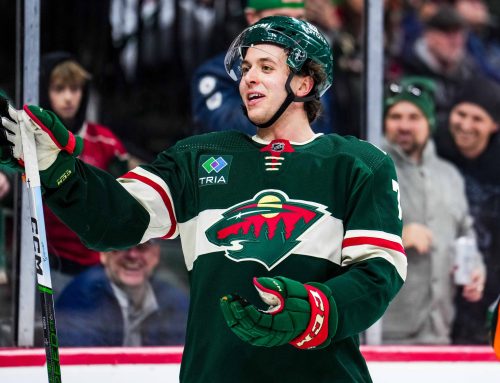

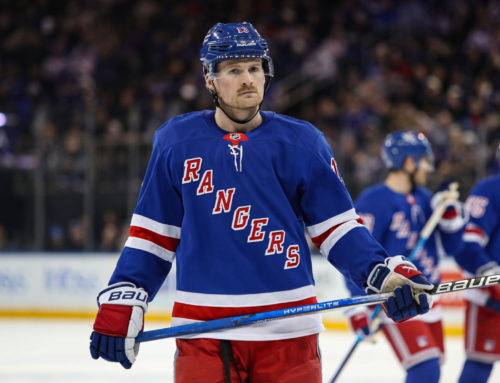
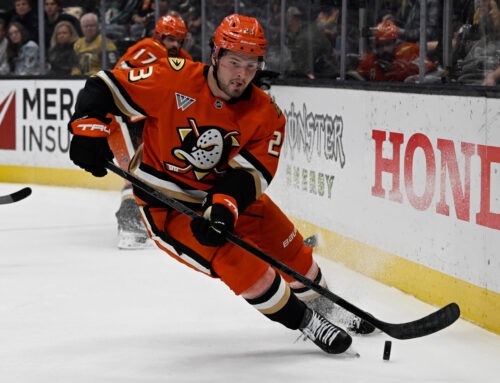
 FLA
FLA TOR
TOR CAR
CAR WPG
WPG DAL
DAL EDM
EDM WSH
WSH CHI
CHI